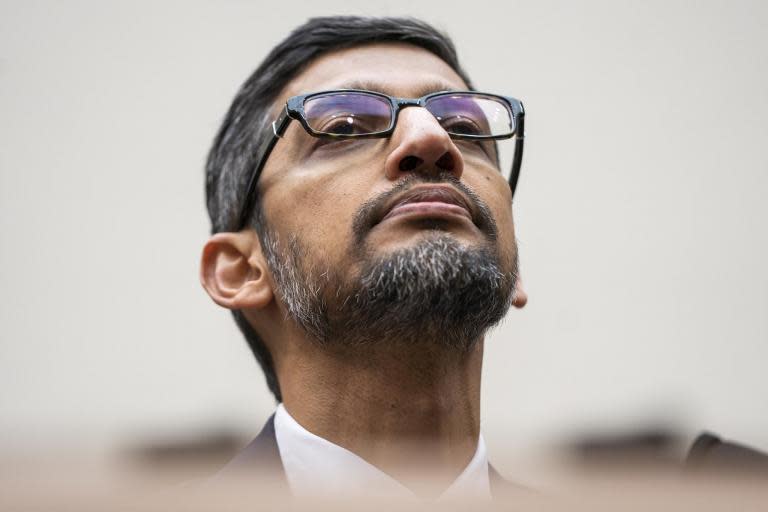Google’s algorithm explained: CEO Sundar Pichai reveals how search results work – and why they sometimes look so bad for Trump
Google's boss has explained how the site's curious search result algorithm works – and why it sometimes has a tendency to show such embarrassing photos, especially for Donald Trump.
How the Google algorithm works remains largely mysterious even to the vast number of people who use it each day, finding out information on which they make the most important decisions.
And into that mystery has rushed a whole host of theories, many of them seeming to suggest that Google is intentionally choosing or even manipulating results to further their political and personal aims.
Those were one of the many questions that Google boss Sundar Pichai was asked about during a US Congress hearing in which he was quizzed about his company, privacy and a whole host of other questions.
During that hearing, representative Zoe Lofgren, a Democrat, mentioned that searching for the word "idiot" on Google Images show a whole host of pictures of Donald Trump. It is just one of a whole range of controversial search results, which have also included the president's claims that Google is intentionally showing bad news.
She asked Mr Pichai why that might happen, and how its search engine worked to show such a result.
"We provide search today so any time you type in a key word, we as Google have gone out an crawled and stored copies of billions of web pages in our index, and we take the keyword, and match it against the pages, and rank them based on over 200 signals: things like relevance, freshness, popularity, how other people are using it," he said.
"And based on that, at any given time, we try to to rank and find the best results for that query. And then we evaluate them with external raters, to make sure that, and they evaluate it to objective guidelines. That’s how we make sure the process is working."
He pointed out that it would not be possible for Google to go through all of the vast number of searches that are entered into it each day and make sure they were biased.
"Last year we served over 3 trillion searches," he continued. "And just as fact, every single day 15% of the beaches Google sees, we have never seen them before.
"This is working at scale. And we don’t manually intervene on any particular search result."
Ms Lofgren noted that didn't mean that there was a specific person – "some little man sitting behind the curtain figuring out what we’re going to show the user" – deciding what it showed to people. Instead, it was a number of factors, some of which still remain mysterious to people posting and searching on Google, she noted.

 Yahoo News
Yahoo News 

